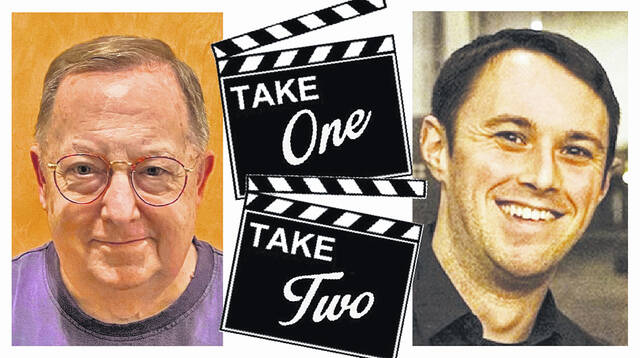Few filmmakers in cinema history have had as profound an effect on the medium as Jean-Luc Godard, who earlier this month at 91.
The founding architect of the French New Wave cinema movement, Godard was also the inventor of modern film editing when he developed the “jump cut,” taking out a few frames from a single shot in order to develop a rhythm or convey time. Nearly 60 years later, he continued to have a prolific output, and a surprisingly challenging one.
Always known for being irascible and insubordinate, his most recent films “Goodbye to Language 3D” (2014) and “The Image Book” (2017) were some of his most challenging, technically and conceptually.
Take One
Godard’s first film, “Breathless” (1960), is a cornerstone of French New Wave cinema along with Francios Truffaut’s “The 400 Blows” (1959) and Alain Resnais’ “Hiroshima, mon amour”(1959). A crime drama, based on an earlier news article, featuring a nihilistic petty criminal and his American girlfriend, as portrayed by Jean-Paul Belmondo and Jean Seberg. The original treatment was written by Truffaut but much of the dialogue was improvised by Godard as he shot the movie. The bold visual style (the movie was shot using hand-held cameras) and innovative jump cuts, in the editing, resulted in a style that has influenced directors such as Martin Scorsese, Francis Ford Coppola, Oliver Stone and Paul Thomas Anderson. This film made Belmondo an overnight sensation and is listed as a favorite by Godard’s directing contemporaries—Bernardo Bertolucci, Akira Kurosawa and Michelangelo Antonioni.
“Alphaville”(1965) is a challenging science-fiction neo-noir detective story set in a futuristic dystopian society where all displays of emotion can result in death. American musician Eddie Constantine stars as secret agent Lemmy Caution, investigating the disappearance of Professor von Braun, the creator of Alpha 60; the computer that administers all aspects of life in Alphaville. Caution is assisted by von Braun’s daughter played by Godard’s then wife, Anna Karina. The entire film was shot in Paris using (for the era) modernistic concrete and glass buildings and sets in stunning black and white. This preview of an Orwellian society of the future is jarring and uncomfortable.
Take Two
There may be no cooler film in all of cinema history than Godard’s 1964 crackerjack crime noir, “Band of Outsiders,” featuring the stunning Anna Karina, this time leading a couple Parisian low-lifes in a fateful robbery. The characters all dress in crisp, lean suits and high turtlenecks and don fedoras that obscure their eyes. Always known for his technological innovation, Godard takes it to the extreme here, most notably in an extraordinary, fourth-wall defying sequence in which the characters all share a “moment of silence” where the soundtrack is literally scrubbed silent. In another memorable moment, the three leads share a shuffling, sexy and supercool dance number which would eventually inspire Uma Thurman and John Travolta to do the same 30 years later in “Pulp Fiction”(1994).
One of Godard’s most electrifying and elusive films is the underappreciated “Contempt” (1963), starring the blonde bombshell, Bridgitte Bardot, at her most scintillating, and also her most empowered. The film, an examination of power and corruption in interpersonal relationships, follows playwright Michel Piccoli as he warily accepts the offer of a skeezy American producer (played with that trademark gravely voice by Jack Palance), hoping to do a crass remake of Homer’s “The Odyssey.” Legendary director Fritz Lang lights up the screen as himself, helming the production. One of the earliest psychodramas to cross from Europe into the United States, the film helped crack the American Hays Code, paving a new era for Hollywood, and cemented Bardot, both in appearance and skill, as the preeminent 1960s-era sex symbol.
An interesting curio of the many from Godard’s storied career, “ Sympathy for the Devil” (1968), also called “One Plus One,” was his attempt at mixing real-life superstardom with the expressly political. Featuring an unkempt Mick Jagger and the Rolling Stones, deep in the sessions of their landmark song from “Beggars Banquet,” the documentary weaves between their raw London recording sessions, and both real and imagined documentary footage of the Black Panthers in that fateful year of revolution. Godard’s politics are clear, but the ultimate effect of the film is patchy, largely because Godard abandoned the film for many years after apparently punching the producer in the face for making unauthorized edits. Still, watching the long, clear takes of the rock legends at their undisputed apex methodically work out the creases in their titular song is an unabated pleasure for any die-hard Stones fan.
(This column is written jointly by a baby boomer, Denny Parish, and a millennial, Carson Parish, who also happen to be father and son.)





